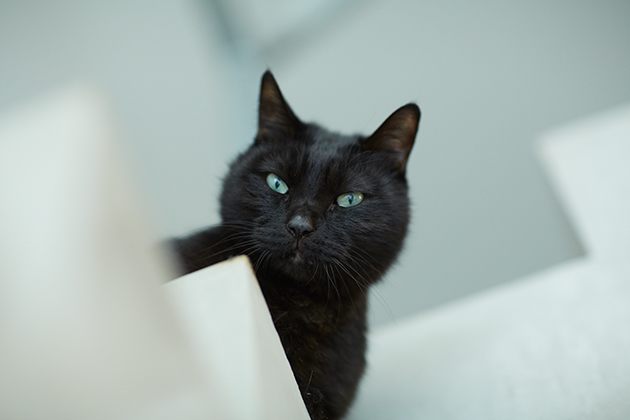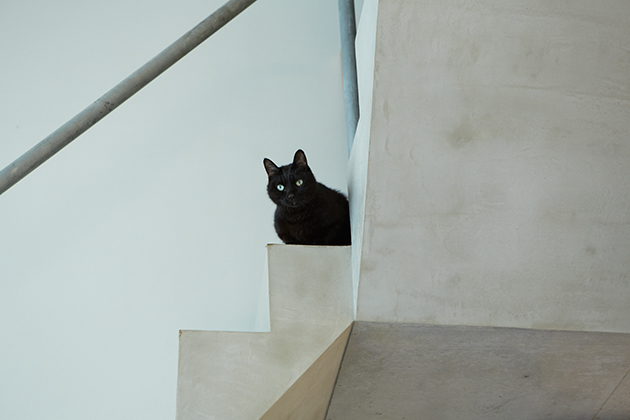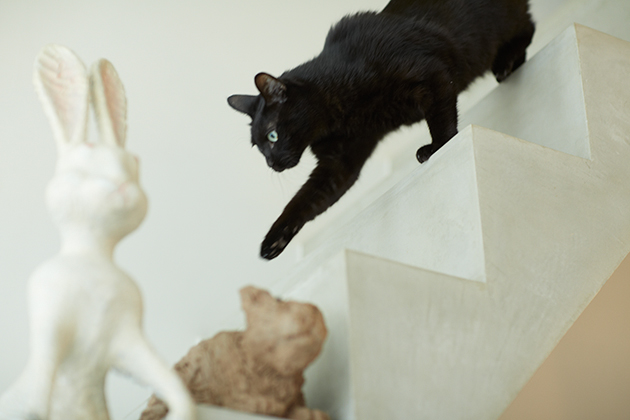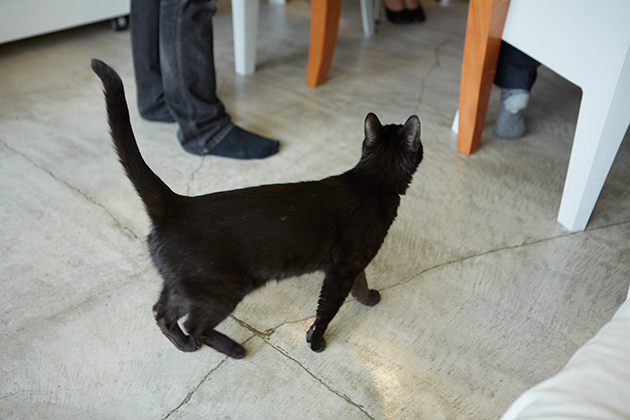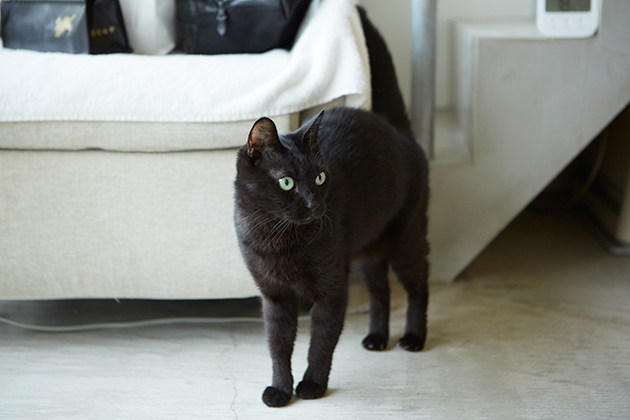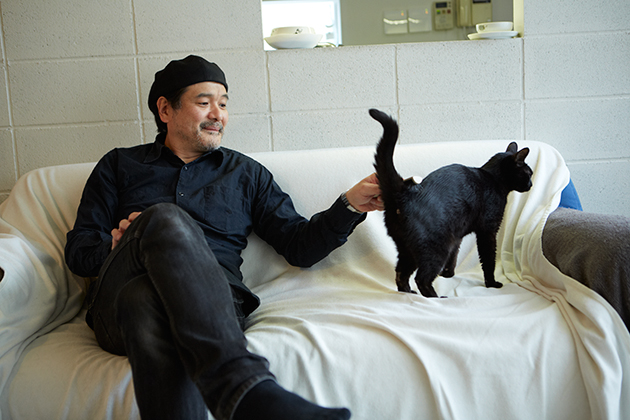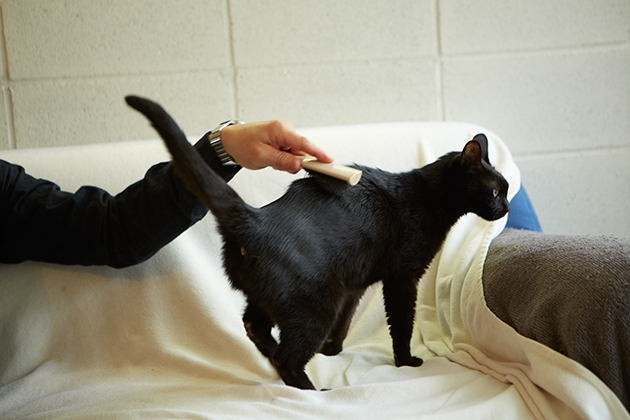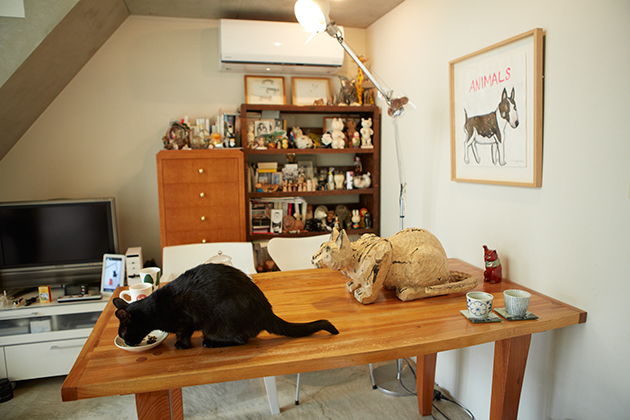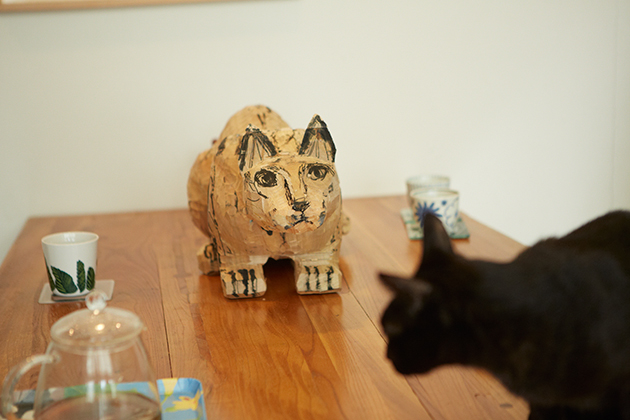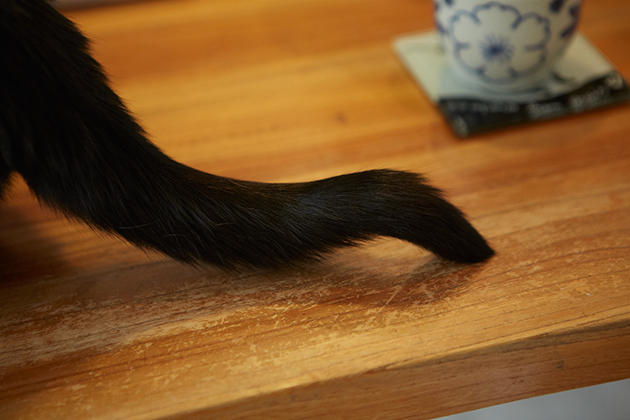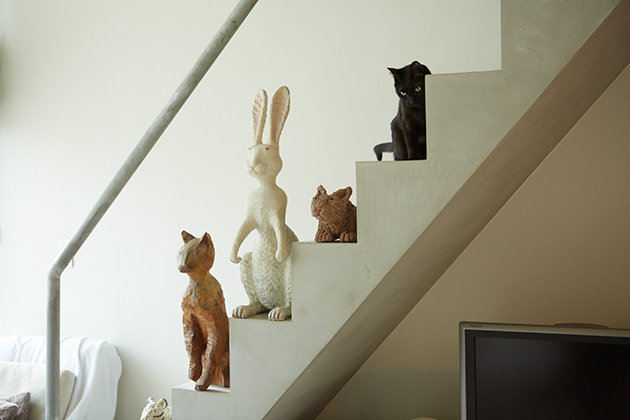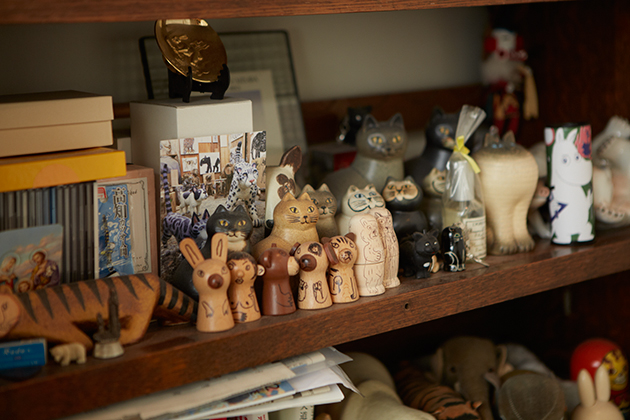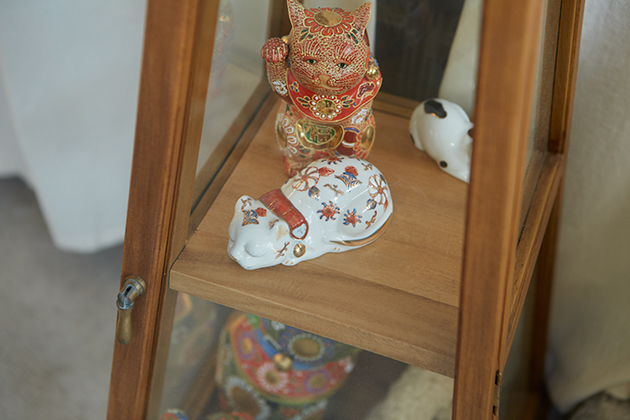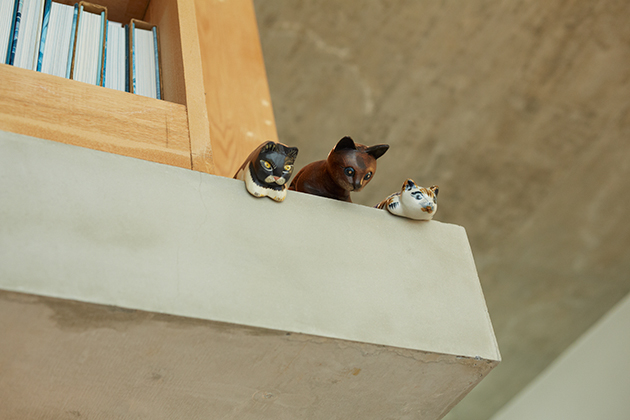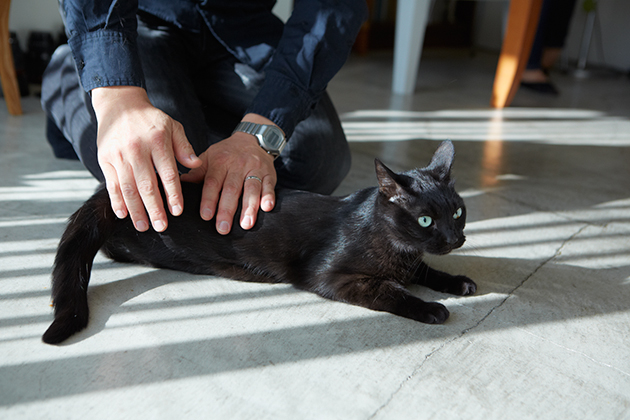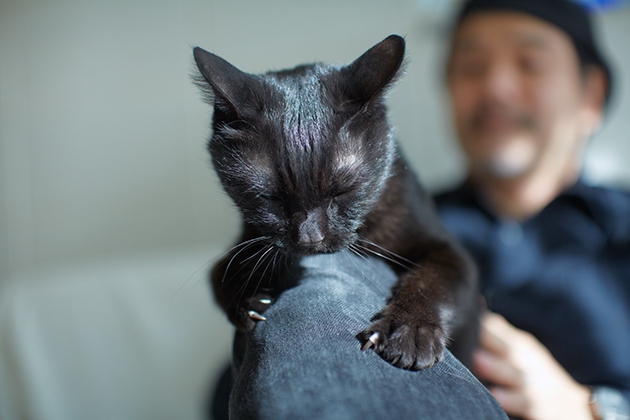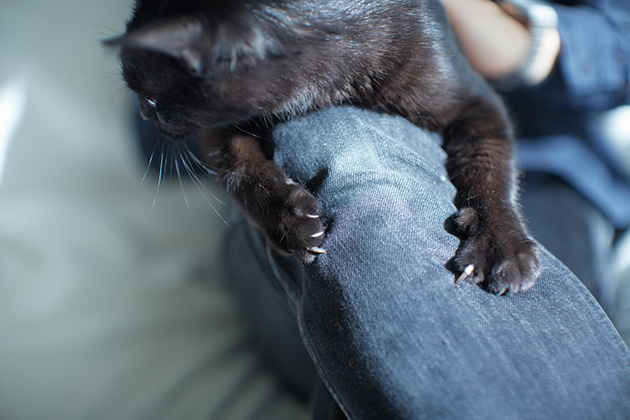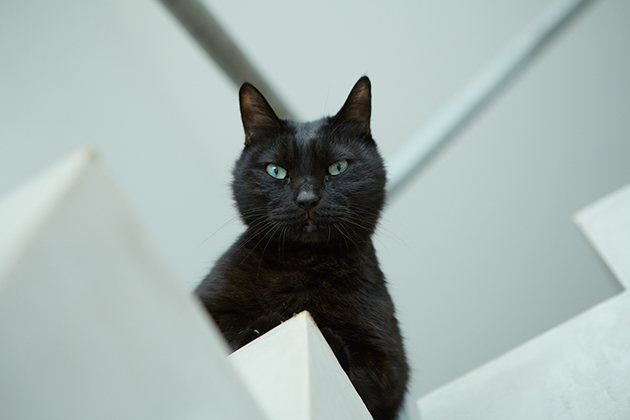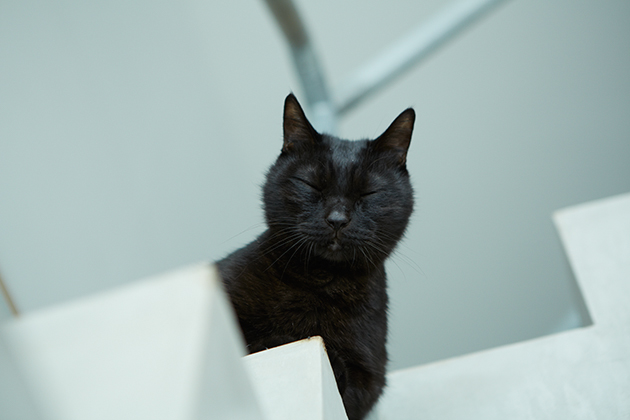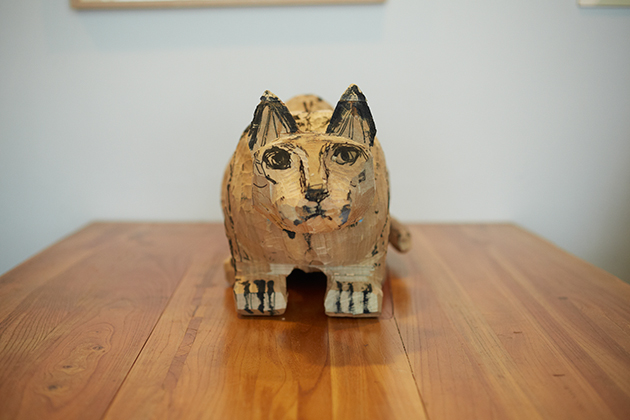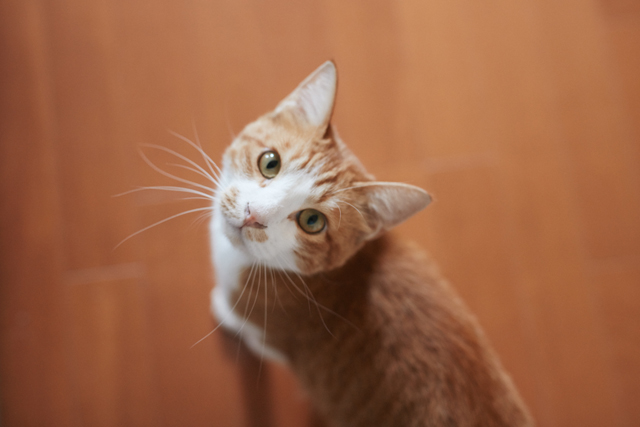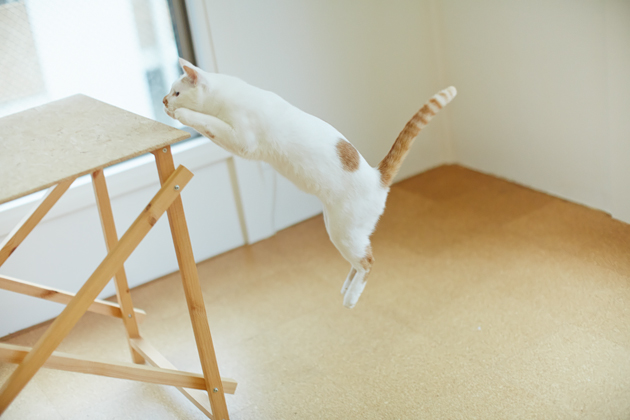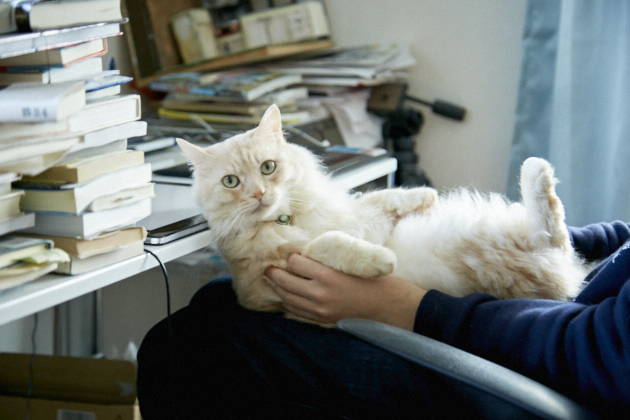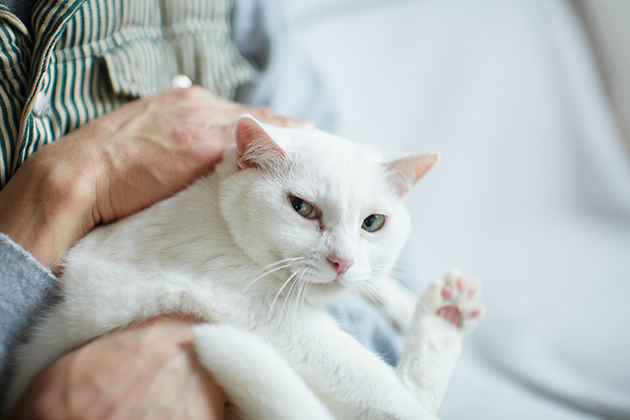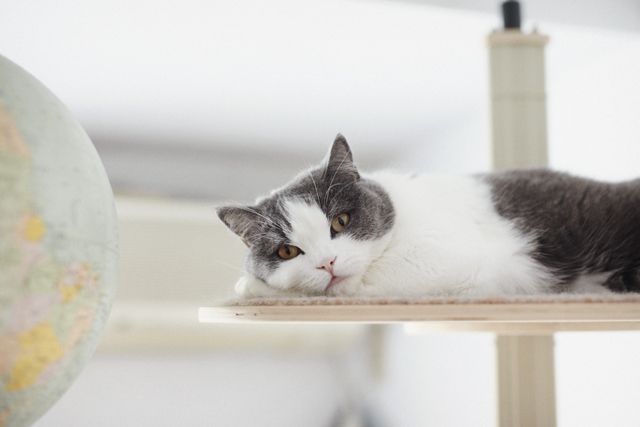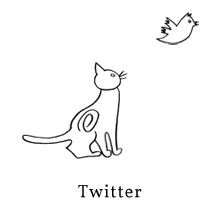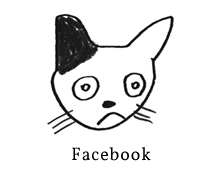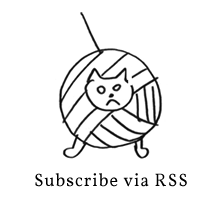Misawa Atsushiko is a sculptor best known for his series of wood sculptures titled 'Animals.' The series features motifs such as elephants, lions and rabbits. Misawa currently lives alongside a thirteen-year old black cat named 'Koo.' Cats also have a major presence among Misawa's portfolio of life-size animal sculptures, which are unique for their humorous expressions. We interviewed him on his life with a black cat and how he connects with animals in general.
A kitten found by the garbage dump
- How did you encounter Koo?
"When I was working as a part-time instructor at an art university, I happened upon a skinny little kitten wrapped in a piece of blue tarp at the garbage dump in Ueno Park. After first passing him by, I couldn't get him off of my mind. So I went back. He was very weak and I was afraid that he wouldn't make it, but I took him back to my studio anyway. My wife also loves cats, so I ended up taking him back the house."
- What is his character like?
"Koo is extremely smart. I think he understands what we say. He can shake with both of his paws. He had a terrible amount of fleas when we took him in, but the vet fixed him up. After Koo recovered, he has never had any serious illnesses. He's remained quite healthy. Koo is also a very active cat - he sometimes jumps up like a monkey."
A cat with a wild streak
- Had you already started your 'Animals' series when you met Koo?
"That was just about when I started using animals as a motif. Compared to elephants and lions, cats and dogs share a closer existence with human. They have lived with us throughout our history. Yet, cats sometimes get all ferocious. That's when I feel that they still have a wild streak left in them."
-Have you used Koo as a model for a sculpture?
"I've made some sketches, but never a sculpture of him. You know, I already have the real thing... The thing that amazes me the most about cats is how their nerves are completely on edge. From the tip of their noses to their ears to their claws to the ends of their tails, cats seem to have a perfect sense of direction and rhythm. I think it is the shape of their outline that gives them their 'cat-ness.' Also, you don't see a living thing that is jet-black very often. Maybe black panthers. Most living things have patterns or earthy colors. I think solid black cats stand out among them as strange creatures."
- You have many cat statues in your house. I notice some 'lucky cat' maneki-neko and the ceramic works of Lisa Larson.
"It's not like I'm doing research - they are just my objects of desire (laughs). Of course, I do have certain preferences when it comes to cat forms. When I find them, I just can't help but add them to my collection. Compared to cartoonish depictions and character-like goods, I prefer works that depict the shapes of cats and emphasize their gestures. The work of Lisa Larson is quite stylized. However, I like how she arranges the forms for the mold in an easy manner - it shows her understanding of ceramic material. The maneki-neko ('lucky cat') done in the Kutani-yaki ceramic tradition also does a good job at depicting the roundness of cats."
- Are cats easier to make compared to other animals?
"I think a cat's form has a wider latitude. They still keep their shape even if their forelegs are a bit short or if their bodies are too long. I intentionally make their tails longer sometimes. Cats are now a regular motif for me. When I unwind, I find myself making cats."
- Are there many cat lovers around you?
"I think there are more dog lovers. Cat lovers don't listen to others when they start talking about cats, do they (laughs)? They may look like they are listening, but the next thing you know, they are talking about how smart their own cats are. Of course, it's always fun to talk about common passions."
- What do you find most attractive about cats?
"Cats may look obedient, but they never actually change their natural manner. Yet, they don't want to be left alone. They roll up like a rubber ball and then stretch out as far as they can. The capacity for their shape is so wide. Dogs, on the other hand, are well-muscled but don't change form that much. Cats are very flexible. From the way they walk to how they sleep, every time I look at a cat, I seem to find something new."
